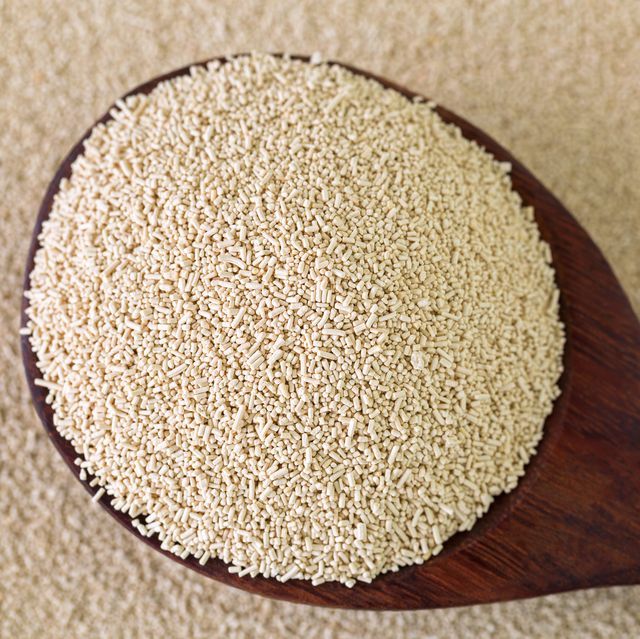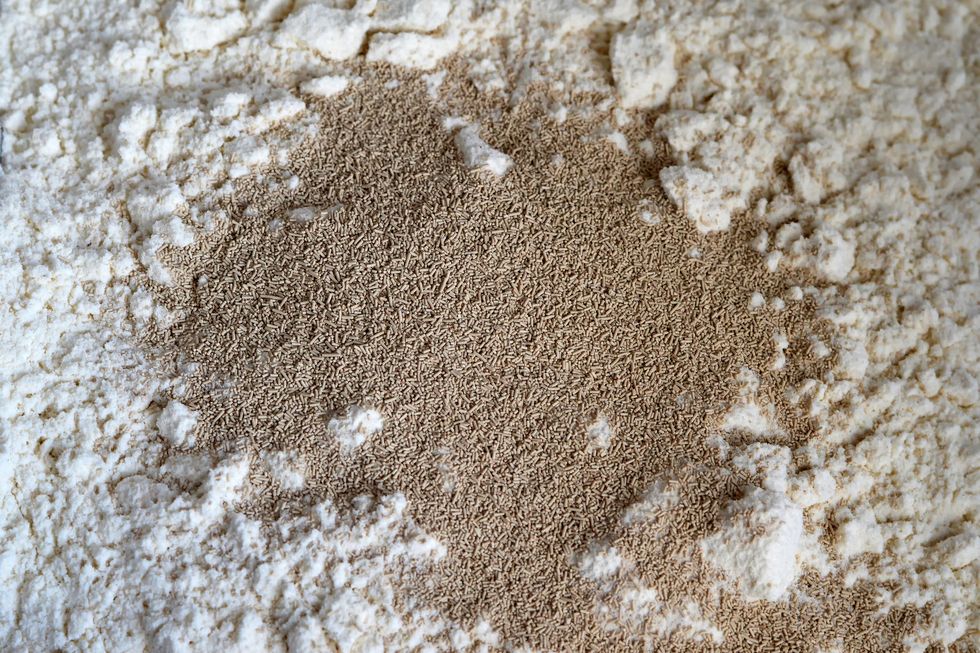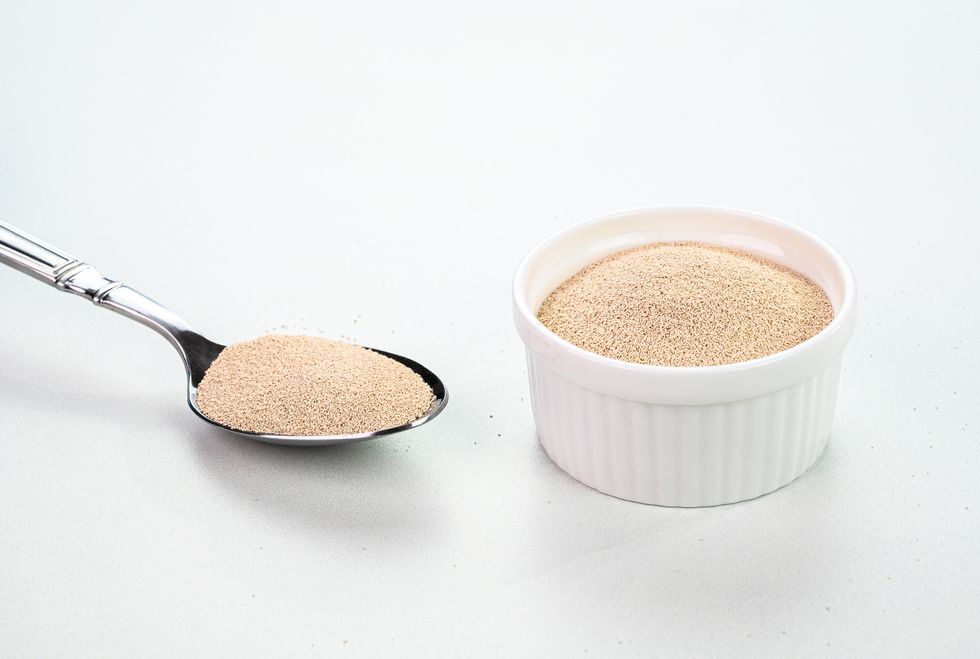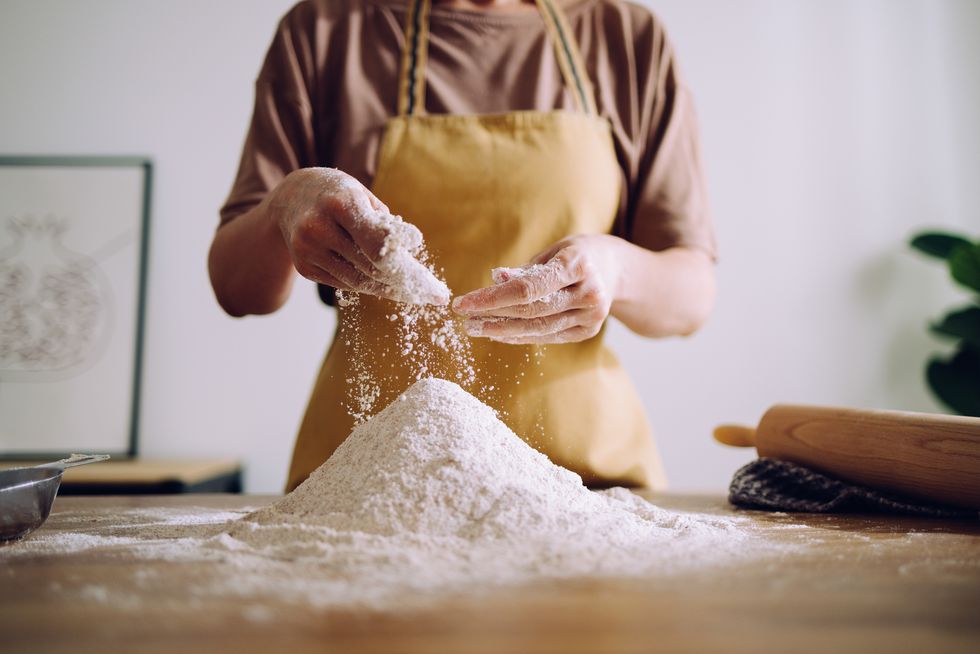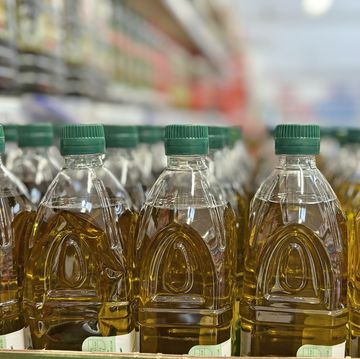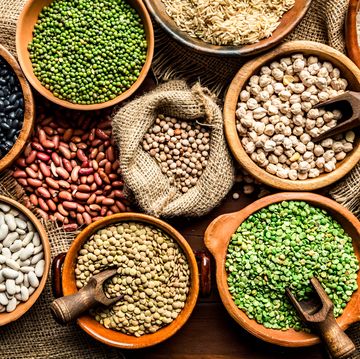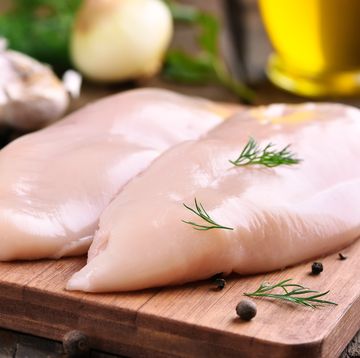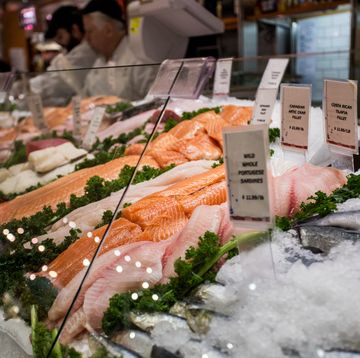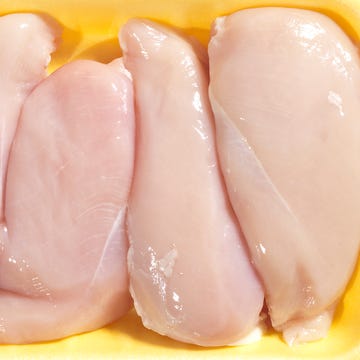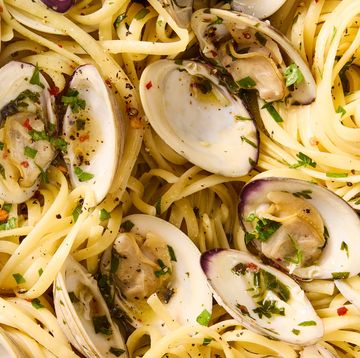Whether you're making a loaf of bread or DIY-ing your own crust for pizza night, you need yeast to do the heavy lifting. And when we say lifting, we're being literal. Baker's yeast, known scientifically as Saccharomyces cerevisiae, are tiny single-celled microorganisms that have been used as a leavener for millennia.
On the most basic level, yeast feeds on the starches in flour and releases carbon dioxide. Those CO2 bubbles get trapped in whatever you're baking and increase the volume of your dough.
You can find yeast in several different forms: you can make it the OG way by trapping wild yeast using a sourdough starter or rely on commercial forms of yeast. We've already explained the main types of yeast and how to use them, but there's a lot of confusion surrounding the two most popular forms of yeast.
If you're working on virtually any home baking project, your recipe will likely call for either active dry or instant yeast. And at first glance, they're essentially the same thing. They sit next to each other on supermarket shelves. The granules look nearly identical. They also both accomplish the same thing.
But that doesn't mean they're the same. So we're unpacking all of the differences between active dry and instant yeast, so you know which option is best for your next baking project.
What Is Active Dry Yeast?
Active dry yeast is made by dehydrating live yeast, which effectively puts it in a state of hibernation. It's then ground into granules about the size of cornmeal and sold in ¼-ounce packages or four-ounce jars.
To wake up the yeast, you need to place it in warm water and rehydrate the granules—a process known as blooming. After sitting in water within 100°-110°F, the yeast will start foaming. From there, you can incorporate it into your dough and continue with the rest of your recipe.
What Is Instant Yeast?
Instant yeast is also made by dehydrating live yeast. But, true to its name, this form of yeast is formulated to start working instantly. The granules are much finer and typically have a higher concentration of live yeast cells. This means you can add it directly to your bowl without the need to bloom it.
What Is The Difference Between Active Dry And Instant Yeast?
There are several key distinctions between the two main types of yeast. Active dry requires more time for the microorganisms to do their job. Once you factor in the larger granules, the required blooming step, and the lower concentration of yeast cells, it takes a bit more time for your dough to rise. Instant yeast, on the other hand, can be added directly to your dry ingredients, which is a helpful shortcut that shaves several minutes off of your prep time. And since there are more yeast cells present, the rising begins much sooner.
However, the way active dry yeast works allows for a prolonged period of rising power compared to instant. Think of it sort of like The Tortoise and the Hare: active dry yeast starts slower but can work for much longer, while instant yeast starts strong but tapers out more quickly. This makes active dry a great choice if you're making a batch of bread that requires multiple rises.
From a practical perspective, active dry yeast is a lot less stable than instant is. If active dry is exposed to temperatures above 120°F, it will start to die and lose its leavening power. It can also lose its potency pretty quickly, which is why many bakers store it in the fridge or freezer. Instant yeast can withstand temperature variation better than active dry can, which makes it a good choice if you only bake sporadically.
Can Active Dry And Instant Yeast Be Used Interchangeably?
Yes, they can! But there are a few things to consider. Swapping active dry for instant yeast, and vice versa, will change your overall baking time. You might also have to adjust your method to accommodate active dry's need for blooming beforehand.
The most important thing to consider is that you'll need to adjust the amount of yeast you're using in your recipe. You'll need to use 25 percent more active dry yeast for recipes that call for instant because of the difference in potency. And if you're using instant instead of active dry, use only ¾ of the amount that the recipe calls for.
Expertise: TikTok Trends, Drinks, Pop Culture
Education: B.A. in Journalism and B.S. in Communications from NYU, Culinary Arts degree from The Institute of Culinary Education
About Me: As an associate editor at Delish, Gabby works on everything from features to recipes to content on our social media channels. Before joining the team, she wrote for StarChefs Rising Stars Magazine, Mashed, and Food52. When she’s not developing cocktail recipes, she’s making cocktail-inspired dishes like Dirty Martini Pasta and Aperol Spritz Trifle. Her features cover online trends like the Millennial Shopping Cart, rank everything from hard seltzers to frozen French fries, and answer some of your most pressing food safety questions. You can also find her posting content on Delish’s TikTok, including her three-part series about cooking like influencer Nara Smith that garnered over 3M combined views. She loves eating spicy food, collecting cookbooks, and adding a mountain of Parmesan to any dish she can.
